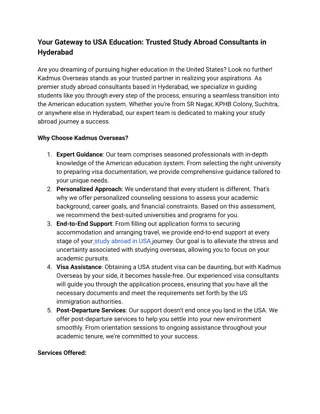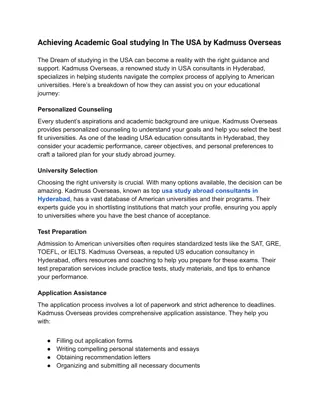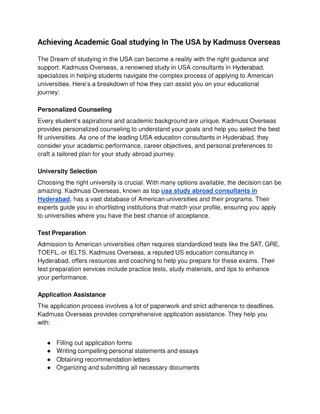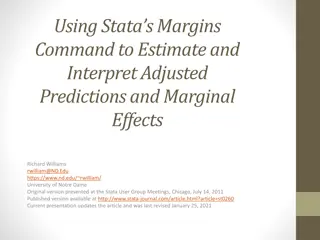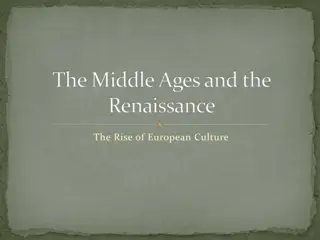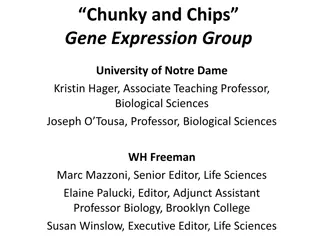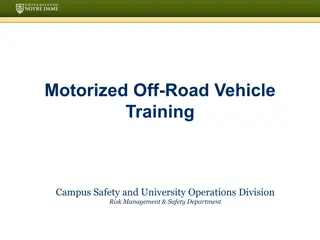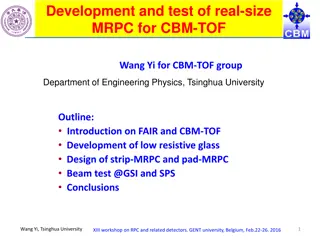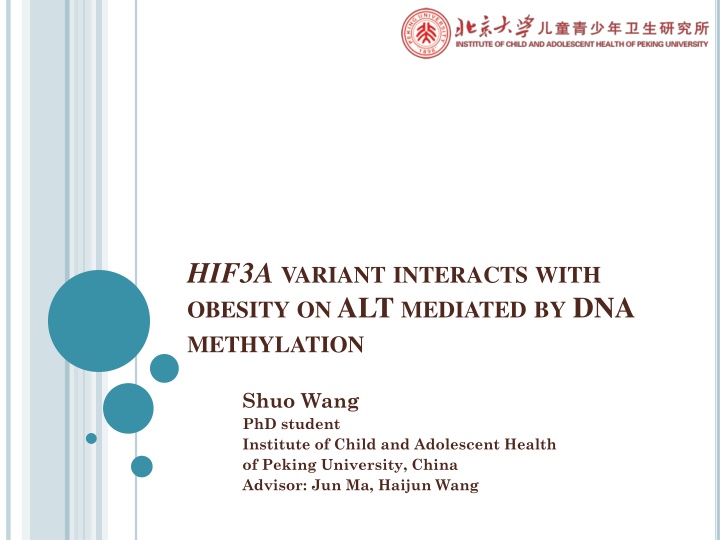
Interactions of HIF3A Variant with Obesity and DNA Methylation
Investigating the relationship between genetic variant HIF3A, obesity, and DNA methylation in Chinese children. Epigenetic mechanisms, DNA methylation, and their impact on obesity-related phenotypes like ALT levels are explored in this study.
Download Presentation

Please find below an Image/Link to download the presentation.
The content on the website is provided AS IS for your information and personal use only. It may not be sold, licensed, or shared on other websites without obtaining consent from the author. If you encounter any issues during the download, it is possible that the publisher has removed the file from their server.
You are allowed to download the files provided on this website for personal or commercial use, subject to the condition that they are used lawfully. All files are the property of their respective owners.
The content on the website is provided AS IS for your information and personal use only. It may not be sold, licensed, or shared on other websites without obtaining consent from the author.
E N D
Presentation Transcript
HIF3A VARIANT INTERACTS WITH OBESITY ONALT MEDIATED BY DNA METHYLATION Shuo Wang PhD student Institute of Child and Adolescent Health of Peking University, China Advisor: Jun Ma, Haijun Wang
INTRODUCTION Epigenetic Heritable events not caused by changes in DNA sequence, and can influence gene expression DNA methylation could contribute to the development of obesity and other diseases like NAFLD A common epigenetic mechanism that occurs by the addition of a methyl (CH3) group to DNA, thereby often modifying the function of the genes. Missing heritability DNA methylation CpG sites 2
EWAS epigenetic genomic association study In 2014, Dick et al. identified a specific association between BMI and DNA methylation HIF3A: Hypoxia Inducible Factor 3 Alpha Subunit, encoding the -3 subunit of the hypoxia inducible transcription factors (HIFs), which regulate adaptive responses to low oxygen tension (hypoxia) Dick KJ, Nelson CP, Tsaprouni L, et al. DNA methylation and body-mass index: a genome-wide analysis. Lancet,2014, 383(9933): 1990 1998. 3
EWAS epigenetic genomic association study In 2014, Dick et al. identified a specific association between BMI and DNA methylation In 2015, Demerath et al. validated the results through another EWAS study and found that HIF3A methylation was associated with long term BMI change HIF3A Demerath EW, Guan W, Grove ML, et al. Epigenome-wide Association Study (EWAS) of BMI, BMI Change, and Waist Circumference in African American Adults Identifies Multiple Replicated Loci. Hum Mol Genet, 2015,24(15):4464- 4479. 4
AIM Focus: HIF3A gene, SNP + methylation 1) To validate the association between HIF3A methylation among Chinese children; 2) To find other obesity-related phenotypes related to HIF3A methylation; 3) To explore the relation among obesity, HIF3A variant, methylation and other obesity-related phenotypes ALT(alanine aminotransferase) 5
METHODS Study design A case-control study. Subjects and indicators Anthropometric Measurement Height, weight, waist circumstance Serological Markers TC, TG, HDL-C, LDL-C, GLU, insulin, ALT 2030 Chinese 7-18y children (705 obese;1325 non-obese controls) SNP (rs3826795) 110 severely obese children and 110 age- and gender- matched normal-weight controls DNA Methylation (HIF3A) 6
SNP genotyping (rs3826795) Genotyping system: Sequenom s MassARRAY system. The genotyping call rate: 97.9%. DNA methylation detection (HIF3A) Genomic DNA of peripheral blood leukocytes Sequenom s MassARRAY system (MALDI-TOF-MS). Quality Control Duplication 100% methylated positive controls 0% methylated negative controls 7
CPG SITES OBTAINED Figure. Simplified output of MassARRAY DNA methylation detection system Table. Position of the tested CpG sites (GRCh37/hg19) CpG1.2 46801557*,46801562 CpG5 46801642* CpG6.7.8 46801669,46801672*,46801676 CpG11 46801699 CpG13.14 46801755,46801760 Finally, 9 CpG sites in 5 CpG units were obtained, with call rates greater than 80%. 8 *The 3 sites reported by previous EWAS studies [2,3].
RESULTS 1. VALIDATION OF HIF3A METHYLATION DIFFERENCE BETWEEN OBESE CHILDREN AND CONTROLS Table 1. General characteristics of the obese children and controls Obese Children(n=107) Age (years) 11.1(2.6) Male 55(51.4) BMI (kg/m2) 28.4(3.8) P Value 0.919 0.785 <0.001 Controls(n=105) 11.0(2.6) 52(49.5) 17.1(2.1) P=0.027 Methylation values (in %) 60 55 Obese Children (n=107) Controls (n=105) 50 45 P=0.044 40 35 30 25 20 15 9 10 CpG1.2 CpG5 CpG6.7.8 CpG11 CpG13.14 Figure 1. HIF3A methylation values in obese children and controls
2. ASSOCIATION BETWEEN HIF3A METHYLATION AND OBESITY-RELATED PHENOTYPES TC TG LDL-C Partial correlation analyses HIF3A methylation HDL-C GLU HOMO-IR Before adjusting for BMI After adjusting for BMI (r=0.226, P =0.007 at CpG11) HIF3A methylation may have a BMI-independent association with ALT. ALT 10
DOES THE ASSOCIATION STILL EXIST ON THE SNP LEVEL? The HIF3A rs3826795 were detected in 2030 subjects No significant association of rs3826795 was found with obesity (P=0.843), BMI (P=0.268) or ALT (P=0.340). WHY? Stratified analyses was conducted in subgroups based on the obesity status 705 obese children 2030 subjects 1325 non-obese children 11
3. INTERACTION OF OBESITY AND HIF3A VARIANT ON PLASMAALT The G-allele number was positively associated with elevated ALT ( =0.075, P=0.037). Obese Each G-allele increased the LgALT level by 0.030. Non-obese No significant association between ALT and the SNP (P=0.741) Means of LgALT (IU/L) 1.4 SNP Pinter=0.042 besity_status 1.2 Obese Non-obese 1 AA AG GG 12 Figure 1. Plasma ALT levels in different groups devided by rs3826795 genotype and obesity
4. MEDIATION ANALYSES OF HIF3A VARIANT, METHYLATION AND PLASMAALT IN OBESE CHILDREN Y = cX + age + age2+ gender + e1 M = ax + age + age2+ gender + e2 Y = c X + bM + age+ age2+ gender + e3. HIF3A methylation (M) b=0.242 (P=0.014) a=0.252 (P=0.009) Testing b: significant mediation effect Testing c : a complete mediation effect ab/c*100%=81.3% c =0.140 (P=0.144) HIF3A SNP (X) ALT (Y) c=0.075, (P=0.037) 13
DISCUSSION Known to be influenced by environmental factors, DNA methylation can also be modulated by genetic variants. Grundberg, et al. [10] conducted analysis of metQTL in a genome study and revealed that 28% genome CpGs were associated with nearby SNPs (within 100 kb). metQTL: methylation quantitative-trait locus Effect size of metQTL (rs3826795-CpG site 46801642): In the EWAS study [13] : each G allele increased the methylation level by 0.039-0.051 in different cohorts. In our study: each G allele increased the methylation level by 0.029 in obese children, and 0.022 in non-obese children. Ethnic difference? Age difference? 14
MECHANISM THAT THE HIF3A GENE LEADS TO ALT ELEVATION IN OBESE CHILDREN Pro-inflammatory Cytokine Production Cellular Hypoxia Increased Adipose Mass and Adipocyte Diameter A biomarker to reflect the defect of liver function a. chronic low-grade inflammation from visceral adipose tissue; b. excess free fatty acids Obesity Status ALT Elevation 15 Mili S, Luli D, timac D. Non-alcoholic fatty liver disease and obesity: biochemical, metabolic and clinical presentations. World J Gastroenterol,2014,20(28):9330-9337. Johnson AR, Milner JJ, Makowski L. The inflammation highway: metabolism accelerates inflammatory traffic in obesity. Immunol Rev, 2012,249(1):218-238.
MECHANISM THAT THE HIF3A GENE LEADS TO ALT ELEVATION IN OBESE CHILDREN A possible speculation: Obesity started a cellular hypoxia status through expanded adipocyte size Inflammatory cytokines are activated by hypoxia Resulting in the defect of liver function and elevated ALT. This process could be modulated by the HIF3A polymorphism. HIF3A SNP HIF3A Methylation Obesity Status Inflammatory Cytokines ALT Elevation 16
LIMITATIONS Case-control design and causality Methylation and tissue problem By comparing the results from different tissue, the EWAS study supported the use of whole-blood DNA methylation profiling for identification of relevant epigenetic changes. Further studies were needed for understanding the mechanism of the relation among obesity, ALT and the HIF3A gene. 17 Dick KJ, Nelson CP, Tsaprouni L, Sandling JK, A ssi D, Wahl S, et al. DNA methylation and body-mass index: a genome-wide analysis. Lancet,2014, 383(9933): 1990 1998.
CONCLUSION In conclusion, we found that obesity interacts with the HIF3A rs3826795 polymorphism on plasma ALT, and the effect of rs3826795 on ALT in obese children could be mediated by HIF3A DNA methylation. The results provided new evidence to the function of the HIF3A gene and the mechanism linking obesity and ALT. The study would be helpful for future risk assessment and personalized medicine of liver diseases such as NAFLD. 18
THANK YOU FOR YOUR ATTENTION! HIF3A variant interacts with obesity on ALT mediated by DNA methylation Shuo Wang PhD student, Institute of Child and Adolescent Health of Peking University, China Advisor: Jun Ma, Haijun Wang






